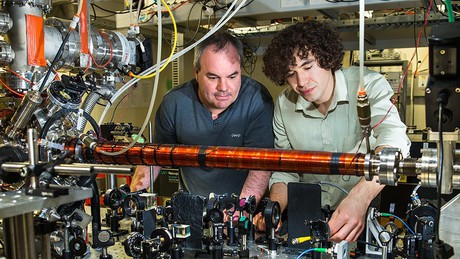Geek Weekly: Our top weird tech stories for 28 May 2015

Technology Decisions’ weekly wrap of IT fails, latest tech, new must-have gadgets, ‘computer says no’ moments and more.
Just as you suspected… reality doesn’t exist. The bizarre nature of reality as laid out by quantum theory has survived another test, with scientists at The Australian National University performing a famous experiment which proves that reality doesn’t exist until it is measured. The researchers conducted John Wheeler’s delayed-choice thought experiment, which involves a moving object that is given the choice to act like a particle or a wave. Quantum physics predicts that whether you observe wave-like behaviour (interference) or particle behaviour (no interference) depends only on how it is actually measured at the end of its journey. This is exactly what the ANU team found. Quantum theory governs the world of the very small and has enabled the development of many technologies such as LEDs, lasers and computer chips.
Space sailor falls silent. A pioneering ‘light sail’ test spacecraft recently launched into space has fallen silent due to a suspected software glitch. The Planetary Society’s LightSail is a small craft designed to deploy a very thin ‘sail’, which will act in a similar fashion to a regular sail and be pushed along by the pressure of sunlight. But not until the sail is unfurled, for which mission controllers will probably need to reboot the craft’s computer.
Expensive Opal. A report published by the Daily Telegraph indicates that Sydney’s Opal public transport ticketing system is losing the state government tens of millions of dollars in revenue due to faulty ticket-reading machines on buses, which are letting travellers make free journeys.
This does not compute. Almost 800 students in Florida had their maths tests annulled recently after it was found they had been handed unapproved calculators with which to do their sums.
Knit wits. Researchers have worked out how to add particles of carbon to various kinds of yarn to produce a fabric that can store energy, in a kind of capacitor set-up.
It’s the stuff of nightmares. Finally, researchers have built a small, robotic ‘cockroach’ called the X2-VelociRoACH that can zip along at a speed of almost 5 metres per second. That’s fast. And creepy.
How AI agents will transform enterprise IT operations
Implementing AI agents requires careful consideration of where the technology fits, what risks it...
Who should take the lead in responsible AI?
The companies that treat responsible AI as a necessity today will be the ones defining the...
Why there's no efficient automation without integration
It's not enough for organisations to simply use AI: they must leverage it in a way that...




